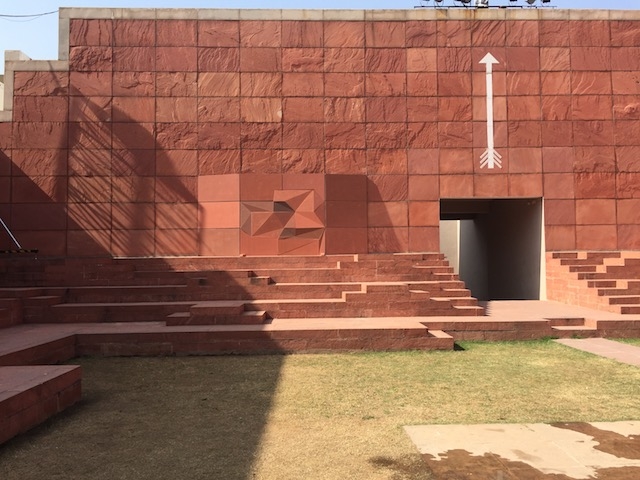This sprawling group show – which brings together the work of architects, artists, designers and urbanists in a variety of media – is less invested in the question its title asks than in showing us how space works and how we interact with it. A series by the architectural photographer Randhir Singh, titled CPWD and showing a social housing project in New Delhi built by the Central Public Works Department in the years after independence, perfectly summarises this focus: these modernist buildings reveal the ways in which they are inhabited and the ways in which they are vulnerable to wear. It’s an unusual aesthetic approach to the canon of Indian modernist architecture, which is typically photographed in a dramatic monochrome, separated from its surroundings and emptied of inhabitants. Designed by the preeminent Indian architects of the time, these projects sprang up in metropolises across the country in the middle of the last century but are increasingly threatened by demolition.
This investigation into time and space is timely because the precarious existence of India’s architectural modernist heritage is the subject of much discussion on the subcontinent today. Recently, the facade of the beloved Paras Cinema in New Delhi was demolished without warning, revealing that its interior had already been torn down without public knowledge. That architectural facades can deceive, yet are nevertheless expressions of the aspirations of a society at a certain time, is among the concerns played out in When is Space?
The show’s strongest suit is its delivery of the encounters between art and architecture: there is no need to force the relationship. Artist Teja Gavankar’s Story of Cubes is a subtle addition to the JKK courtyard. Jutting out almost imperceptibly from the contours of the courtyard wall, this camouflaged sculpture in red stone matches the wall’s brick colour and deconstructs its angles. Given that the title articulates a relation between time and space, it is no surprise that the concerns of When is Space? are formal. With the installation 5/8, artist Mark Prime energises a space through a simple but exacting gesture: the room is filled by a sharp red neon light, briskly reflected by staggered black acrylic sheets. To enter is to be overwhelmed not just by the light, but by the space in which it is held.
‘To invent a new future and to rediscover the past is one gesture,’ claims a plaque at the entrance to the JKK. The architectural history of the complex fulfils this maxim: designed by the late Charles Correa and completed in 1991, the eight blocks of this multipurpose arts centre are steeped in a secular Nehruvian ideology (it was initially commissioned by the Rajasthani government with the aim of providing a home for local arts and crafts). A series of Spatial Puzzles by Milind Mahale offer a refreshing take on Correa’s work: several finely designed steel and wood puzzles allow viewers to play with, and infinitely reinvent, maquette-sized versions of Correa’s iconic architectural forms. In a section devoted more straightforwardly to the history of architecture, photographs and plans from a brutalist crematorium in Coimbatore, developed by Mancini Design from Chennai, offer a regional modernism. The complex includes sympathetic and well-designed spaces in which families can observe the many different rituals pertaining to death. It is a clever inclusion: even though the show is itself presented in Jaipur, a city close to the ‘centre’ of New Delhi, the heart of Nehruvian modernism, it reminds us that the architecture of the ‘peripheries’ retains the capacity to surprise.
When is Space? An exhibition on contemporary architecture at Jawahar Kala Kendra, Jaipur, 21 January – 31 March
From the Spring 2018 issue of ArtReview Asia
